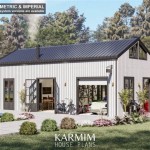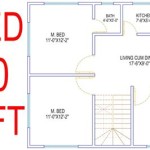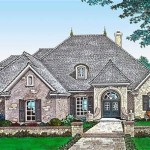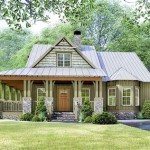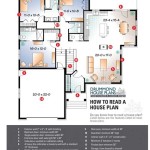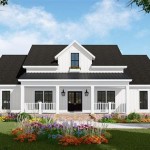Tiny Houses Plans are construction blueprints that guide the building of compact, mobile, or stationary residences. These plans offer detailed instructions and specifications for the layout, dimensions, materials, and amenities of a tiny house.
Tiny house living has gained popularity as a sustainable, affordable, and minimalist lifestyle choice. People from all walks of life, including young professionals, retirees, and environmental enthusiasts, are embracing tiny houses as a way to downsize, reduce their ecological impact, and live more intentionally.
In the following sections, we will explore the various elements of Tiny Houses Plans, including their advantages, design considerations, and the steps involved in creating and building a tiny house.
Tiny Houses Plans provide detailed guidance for constructing compact and efficient living spaces. Here are eight important considerations to keep in mind:
- Layout Optimization
- Space Utilization
- Material Selection
- Structural Integrity
- Energy Efficiency
- Plumbing and Electrical
- Building Codes
- Customization Options
By carefully considering these factors, you can create a Tiny Houses Plan that meets your specific needs and aspirations.
Layout Optimization
Layout optimization is crucial in Tiny Houses Plans due to the limited space available. Every square foot must be utilized efficiently to create a functional and comfortable living environment. Here are four key considerations for optimizing the layout of a tiny house:
- Maximize Vertical Space: Tiny houses often have high ceilings, which can be utilized to create lofts or sleeping nooks above the main living area. Vertical storage solutions, such as shelves and cabinets that extend to the ceiling, can also help to maximize space.
- Utilize Multi-Purpose Spaces: Multi-purpose furniture and spaces can serve multiple functions, saving valuable square footage. For example, a sofa that can be converted into a bed, or a table that can be used for dining and working.
- Create Open Floor Plans: Open floor plans eliminate walls and partitions, making the space feel larger and more inviting. This is especially important in tiny houses, where every inch of space counts.
- Plan for Storage: Ample storage is essential in tiny houses to avoid clutter and maintain a sense of order. Built-in storage solutions, such as drawers under beds or shelves in the walls, can help to maximize storage space without taking up valuable floor space.
By carefully considering these factors, you can create a Tiny Houses Plan that makes the most of the available space and provides a comfortable and functional living environment.
Space Utilization
Space utilization is paramount in Tiny Houses Plans due to the limited square footage available. Every inch of space must be used wisely to create a functional and comfortable living environment.
One key strategy for optimizing space utilization is to design multi-purpose spaces. This means creating areas that can serve multiple functions, saving valuable square footage. For example, a sofa that can be converted into a bed, or a table that can be used for dining and working.
Another important consideration is vertical space. Tiny houses often have high ceilings, which can be utilized to create lofts or sleeping nooks above the main living area. Vertical storage solutions, such as shelves and cabinets that extend to the ceiling, can also help to maximize space.
Finally, it is important to plan for storage in Tiny Houses Plans. Ample storage is essential to avoid clutter and maintain a sense of order. Built-in storage solutions, such as drawers under beds or shelves in the walls, can help to maximize storage space without taking up valuable floor space.
By carefully considering space utilization, you can create a Tiny Houses Plan that makes the most of the available space and provides a comfortable and functional living environment.
Material Selection
Material selection is a crucial aspect of Tiny Houses Plans, as the materials used will impact the durability, energy efficiency, and overall quality of the tiny house.
One of the most important considerations when choosing materials is weight. Tiny houses are often built on trailers, so it is important to use lightweight materials to avoid exceeding the weight capacity of the trailer. Some lightweight materials that are commonly used in Tiny Houses Plans include:
- Wood framing
- Steel framing
- Aluminum siding
- Composite decking
Another important consideration is durability. Tiny houses are often exposed to extreme weather conditions, so it is important to use materials that can withstand the elements. Some durable materials that are commonly used in Tiny Houses Plans include:
- Galvanized steel roofing
- Fiber cement siding
- Treated lumber
- Composite windows
Finally, it is important to consider the cost of materials when choosing materials for Tiny Houses Plans. Some materials are more expensive than others, so it is important to find a balance between cost and quality.
By carefully considering the factors of weight, durability, and cost, you can choose the right materials for your Tiny Houses Plan and build a tiny house that is strong, durable, and affordable.
Structural Integrity
Structural integrity is of paramount importance in Tiny Houses Plans, as it ensures the safety and stability of the tiny house. There are four key elements to consider when designing for structural integrity:
- Foundation: The foundation of a tiny house must be strong enough to support the weight of the structure and protect it from the elements. Common foundation types for tiny houses include piers, concrete slabs, and trailers.
- Framing: The framing of a tiny house provides the structural support for the walls, roof, and floor. It is important to use strong and durable materials for the framing, such as wood, steel, or aluminum.
- Roofing: The roofing of a tiny house protects it from the elements and provides structural support. Common roofing materials for tiny houses include metal, shingles, and rubber.
- Windows and Doors: Windows and doors are an important part of the structural integrity of a tiny house. They must be strong enough to withstand wind and rain, and they must be properly installed to prevent leaks.
By carefully considering these four elements, you can design a Tiny Houses Plan that is structurally sound and safe to live in.
Energy Efficiency
Energy efficiency is a crucial consideration in Tiny Houses Plans, as it can significantly reduce the cost of living and the environmental impact of the tiny house.
- Insulation: Insulation is one of the most important factors in energy efficiency. It helps to keep the tiny house warm in the winter and cool in the summer, reducing the need for heating and cooling systems. Common insulation materials for tiny houses include fiberglass, cellulose, and spray foam.
- Windows and Doors: Windows and doors are another important factor in energy efficiency. They should be properly sealed to prevent air leaks, and they should have energy-efficient glazing to reduce heat loss and gain.
- Appliances: Energy-efficient appliances can also help to reduce the energy consumption of a tiny house. Look for appliances with the Energy Star label, which indicates that they meet certain energy efficiency standards.
- Solar Power: Solar power is a great way to reduce the reliance on grid electricity and generate renewable energy for a tiny house. Solar panels can be installed on the roof of the tiny house to generate electricity, which can be stored in batteries for use at night or during cloudy weather.
By carefully considering these factors, you can design a Tiny Houses Plan that is energy efficient and comfortable to live in.
Plumbing and Electrical
Plumbing and electrical systems are essential for the functionality and comfort of a tiny house. Here are some key considerations for plumbing and electrical in Tiny Houses Plans:
Plumbing
The plumbing system in a tiny house must be designed to meet the specific needs of the occupants. This includes considering the number of people who will be living in the tiny house, the types of appliances that will be used, and the location of the tiny house (on or off-grid).
One of the most important aspects of the plumbing system is the water supply. Tiny houses can be connected to a municipal water supply or have their own water source, such as a well or rainwater harvesting system. The type of water supply will determine the type of plumbing fixtures and appliances that can be used.
Another important aspect of the plumbing system is the wastewater disposal. Tiny houses can be connected to a municipal sewer system or have their own wastewater treatment system, such as a septic tank or composting toilet. The type of wastewater disposal system will determine the type of plumbing fixtures and appliances that can be used.
Electrical
The electrical system in a tiny house must be designed to meet the specific needs of the occupants. This includes considering the types of appliances that will be used and the location of the tiny house (on or off-grid).
One of the most important aspects of the electrical system is the power source. Tiny houses can be connected to a municipal power grid or have their own power source, such as solar panels or a generator. The type of power source will determine the type of electrical fixtures and appliances that can be used.
Another important aspect of the electrical system is the wiring. The wiring in a tiny house must be properly installed to prevent fires and other hazards. It is also important to have a qualified electrician inspect the electrical system before moving into the tiny house.
By carefully considering these factors, you can design a Tiny Houses Plan that has a functional and safe plumbing and electrical system.
Building Codes
Building codes are regulations that govern the construction of buildings, including tiny houses. These codes are in place to ensure the safety and habitability of buildings and to protect the public from unsafe construction practices.
Tiny houses are often built on trailers, which means they must comply with the building codes for both the tiny house and the trailer. In some cases, tiny houses may also need to comply with the building codes for the location where they will be parked or.
There are a number of different building codes that may apply to tiny houses, depending on the jurisdiction. Some of the most common building codes that apply to tiny houses include the International Residential Code (IRC), the International Building Code (IBC), and the National Fire Protection Association (NFPA) codes.
The IRC is a model code that is used by many states and municipalities in the United States. The IRC sets minimum standards for the construction of residential buildings, including tiny houses. The IBC is a model code that is used by many states and municipalities in the United States. The IBC sets minimum standards for the construction of commercial and industrial buildings, including tiny houses that are used for commercial purposes.
The NFPA codes are a set of codes that are developed by the National Fire Protection Association (NFPA). The NFPA codes set minimum standards for fire safety in buildings, including tiny houses. Tiny houses must comply with all applicable NFPA codes, including the NFPA 101 Life Safety Code and the NFPA 70 National Electrical Code.
Customization Options
Tiny Houses Plans offer a wide range of customization options to suit the specific needs and preferences of the homeowner. These options allow you to create a tiny house that is truly unique and reflects your own personal style.
- Layout: The layout of your tiny house is one of the most important customization options. You can choose from a variety of different layouts, including lofts, sleeping nooks, and open floor plans. You can also decide where to place the kitchen, bathroom, and living area.
- Materials: The materials used to build your tiny house are another important customization option. You can choose from a variety of different materials, including wood, steel, and aluminum. The materials you choose will affect the weight, durability, and cost of your tiny house.
- Finishes: The finishes of your tiny house are another way to customize your home. You can choose from a variety of different finishes, including paint, stain, and wallpaper. The finishes you choose will affect the look and feel of your tiny house.
- Appliances and Fixtures: The appliances and fixtures in your tiny house are another way to customize your home. You can choose from a variety of different appliances and fixtures, including refrigerators, stoves, and toilets. The appliances and fixtures you choose will affect the functionality and comfort of your tiny house.
By carefully considering your customization options, you can create a Tiny Houses Plan that is perfect for your needs and lifestyle.










Related Posts

